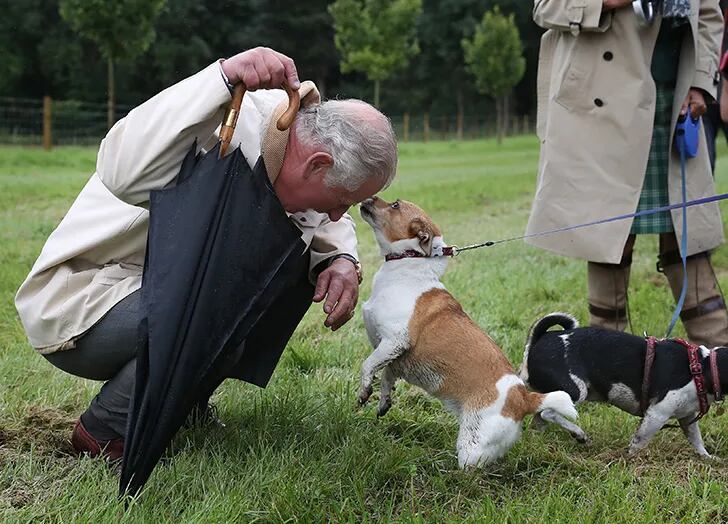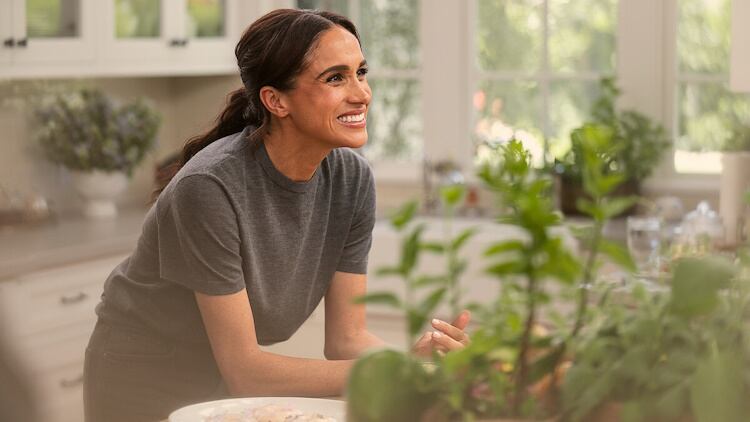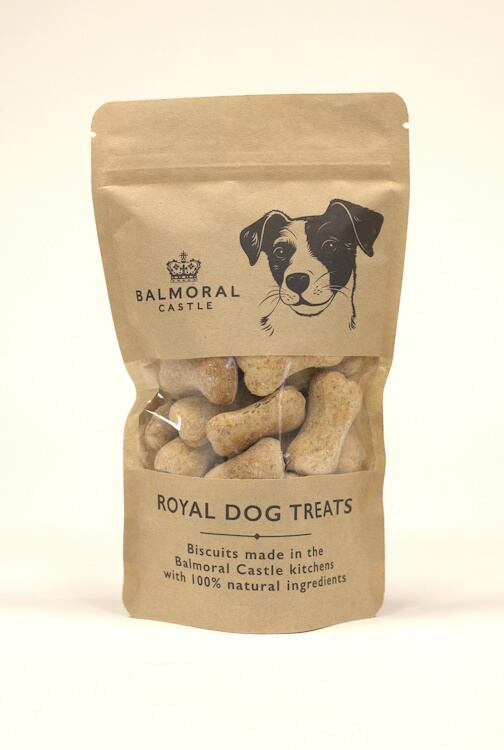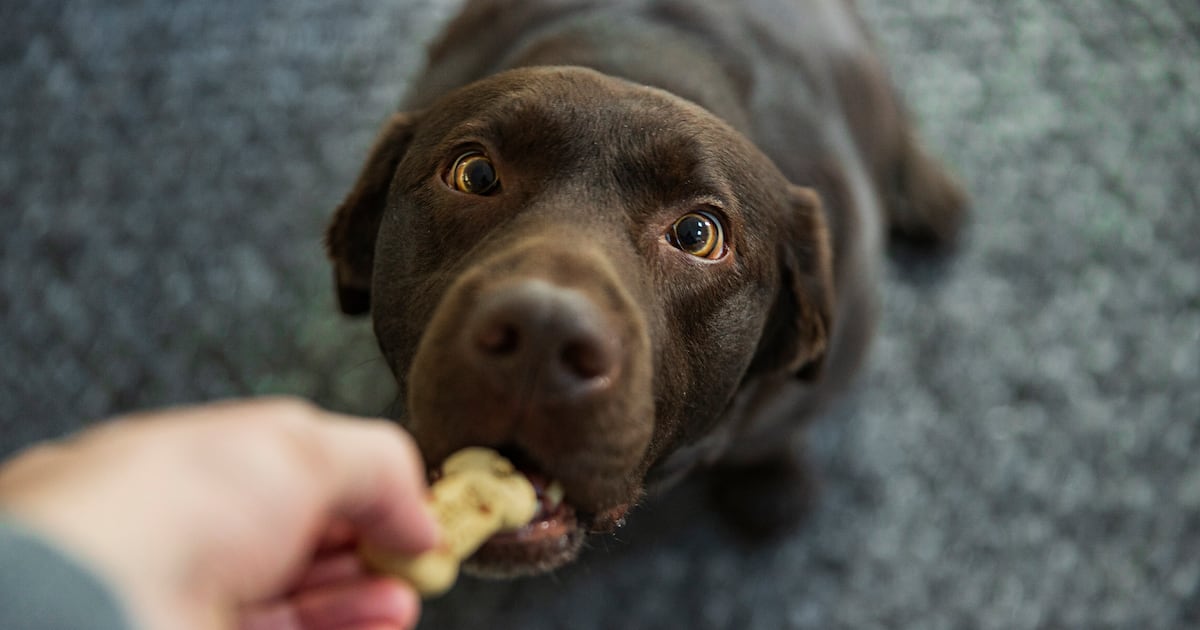Move over foie gras and filet mignon – there’s a new delicacy on the royal menu and it smells delightfully of chicken stock, wholemeal flour and quiet privilege.
That’s right. King Charles III – monarch, organic farming advocate and now part-time petpreneur – has entered the biscuit business. But not just any biscuits: these are posh, paw-approved snacks for the royal family’s most loyal subjects – its dogs.
Hand-baked in the kitchens of Balmoral Castle, the newly launched Royal Dog Treats are already turning heads (and tails) across the kingdom. Described as 100% natural biscuits, the bone-shaped treats are crafted in small batches using wholemeal flour, egg and rich chicken stock. And if whispers in the royal scullery are to be believed, a peanut butter variety is in the works. A royal scoop, if you will.
They’ll set you back £5 ($6.70) for a 75g bag – at which peasants may gasp, but for those who’ve long suspected their Labradoodle might be a distant cousin of the Habsburgs, it’s practically a bargain.
Are they fit for humans?
Yes, technically, these royal biscuits are human-edible. They’re made from simple, natural ingredients like wholemeal flour, eggs and chicken stock; and are free from added sugar, preservatives and artificial additives such as titanium dioxide.
That said, they’ve been developed with canine palates in mind. The texture and seasoning may not appeal to most human snackers – though the absence of salt and sweeteners does speak to clean label trends and human-grade sourcing.
According to palace insiders, a few guests have reportedly mistaken them for savoury shortbread. While not designed for afternoon tea, the fact that they’re safe – and surprisingly wholesome – by human food standards is part of the product’s appeal.
A-lister snacks Prince Charles with rescue dogs (Credit/Getty Images)
Prince Charles with rescue dogs (Credit/Getty Images)
All treats undergo the Snuff Test. No, Snuff’s not an Edwardian butler, but King Charles’ new Lagotto Romagnolo, a truffle-hunting breed with aristocratic eyebrows and a nose for gourmet nonsense. Gifted to the King earlier this year, Snuff is said to be both the inspiration – and the chief taste tester – behind the Balmoral biscuit bonanza.
While Charles has always been a dog devotee (RIP Tigga, the King’s Jack Russell terrier who passed in 2002 at the stately age of 18), Snuff represents something new. A monarch. A mutt. A shared love of fine ingredients. And now – an unlikely business empire.
Barking up the Royal family tree With love from Meghan (Credit/Netflix)
With love from Meghan (Credit/Netflix)
King Charles isn’t the only royal in the biscuit game.
Earlier this year, Meghan Markle (er, Sussex) whipped up a batch of homemade peanut butter dog biscuits on her Netflix series With Love, Meghan, while wearing a cashmere jumper and reflecting on the healing power of chia seeds. Her fans were inspired. Their dogs, one presumes, were extremely smug.
And while the Balmoral recipe may have been independently developed, palace insiders say the royal kitchen staff has been testing versions using organic oats, Highland heather honey and the sort of artisan peanut butter that can rival monthly pet insurance premiums.
Thus, in what may be the most genteel bake-off since Mary Berry left The Great British Bake Off, the House of Windsor now finds itself with not one, but two peanut butter biscuit influencers under its banner.
Monarch and mutt
Of course, biscuits are only part of the picture. Balmoral’s Pet Collection is a full-blown canine lifestyle brand – because what’s a posh snack without accessories?
Online shoppers can also pick up:
- A tweed dog collar so elegant it makes your AirTag look common.
- A matching treat pouch – ideal for the butler.
- A ceramic dog bowl featuring the royal coat of arms – perfect for kibble or a dash of Perrier.
- Orders ship globally – Royal Mail within the UK, DHL abroad – so whether you live in Mayfair or Minnesota, your pup can now snack like a sovereign.
Ultimately, the Royal treats are everything you’d want from a modern monarchy: slightly absurd, unexpectedly wholesome and just bougie enough to make you question your own pantry.
They’re also a gentle reminder that dogs, like humans, deserve the occasional indulgence. Especially when those dogs live in castles, wear tailored tweed and have a biscuit budget that rivals your weekly grocery shop.
So go on. Spoil your pup. Ship a bag. Tell them it came from the King.
Snack makers turned pet pros
A growing number of snack producers once devoted solely to human indulgence are now dipping a paw into the booming pet treat market. Here’s who’s crossing the species aisle:
JM Smucker Co.
From Jif & Uncrustables to Milk-Bone, Meow Mix & Pup-Peroni
You’ve likely spread its peanut butter on toast, but Fido gets his own now. Just don’t mix up the jars.
General Mills
From Cheerios, Nature Valley & Häagen-Dazs to Blue Buffalo
Acquired in 2018 for $8 billion, Blue Buffalo has helped GM cater to dogs with the same wellness halo as its granola bars – just with more chicken meal.
Mars, Inc.
From Snickers, M&Ms and now Pringles to Pedigree, Whiskas, Greenies & Cesar
Following its $36 billion acquisition of Kellanova’s global snacking division in 2025, Mars is now firmly in charge of your midnight cravings and your dog’s.
Nestlé
From KitKat, Nesquik & Shreddies to Purina, Fancy Feast & Beggin’ Strips
Nestlé’s pet division nearly rivals its confectionery earnings. If you love Nespresso and your dog loves Purina, you’re both on-brand.
Bimbo Bakeries USA
From Sara Lee, Entenmann’s & Thomas’ English Muffins to pilot pet snack ranges (grain-based, ‘human-grade’)
The company has begun co-developing upscale grain-based treats for North America. A bagel for you, a biscuit for Baxter.
Post Holdings
From Honey Bunches of Oats & Weetabix to Rachael Ray Nutrish & Nature’s Recipe
Since acquiring several mid-tier pet food brands in 2023, Post has gone from cereal bowls to puppy bowls.
Why the shift?
The global pet snacks market was valued at over $50 billion in 2024, according to Euromonitor, and is growing faster than many human snack categories. As one industry analyst put it: “When your kid leaves home, you stop buying fruit snacks. When your dog gets older, you start buying more treats.”
